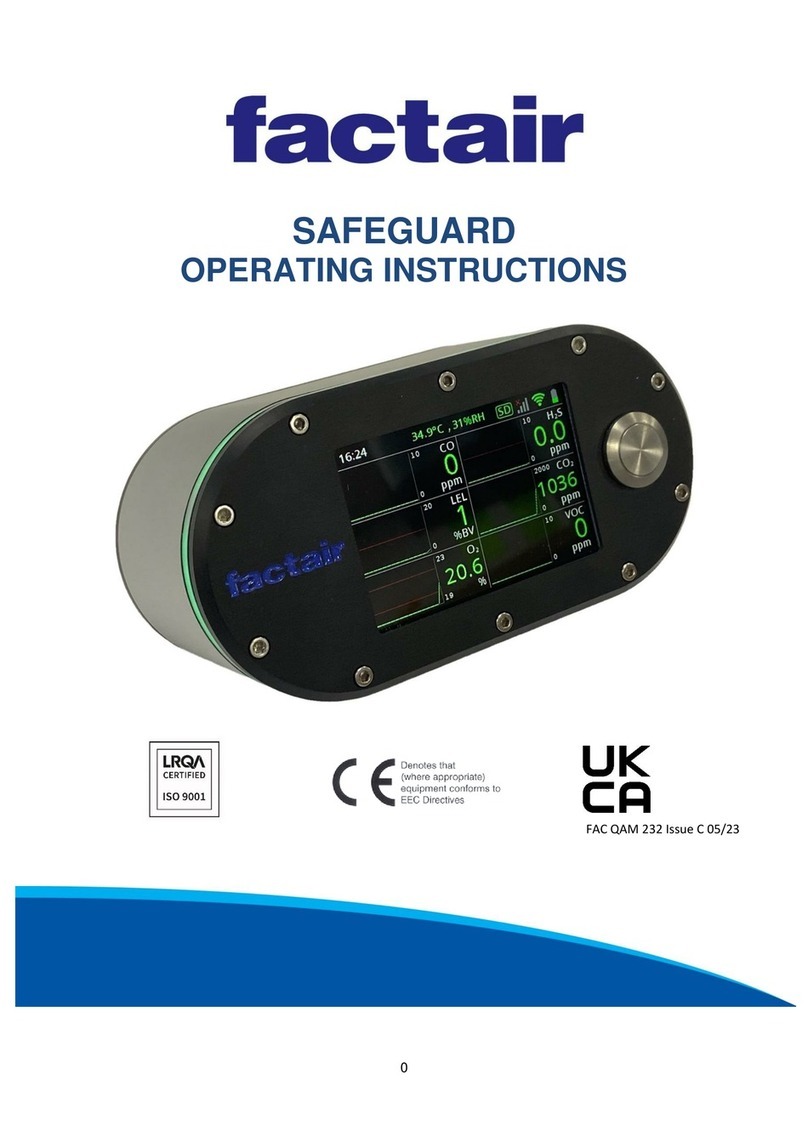
1 INTRODUCTION
Designed for accuracy and ease of use, the Factair F3000 Safe-Air Tester
is the fourth generation of this market-leading instrument. Using the unit
to conduct monthly checks of the flow and purity of compressed-air
breathing systems will ensure compliance to the relevant requirements of
COSHH L5.
With speed and repeatability as prime objectives, the need for manual
adjustment of flow and timing has been removed. Once the equipment
has been set up on site, tests are carried out automatically and the
detection parameters of EN12021:1998 met or exceeded.
Simple precautions and attention to the operating instructions will ensure
that the F3000 provides many years trouble-free operation. Please read
this manual fully before operating the unit.
Calibration and Warranty
Safe-Air Testers leave our factory with a 12-month warranty and
calibration certificate. Our standard turnaround on annual calibration is 10
working days providing there is no major damage that requires extensive
rebuild.
Inside the carry case there is a laminated sheet listing the detector tubes
that your Safe-Air Tester is calibrated for and information on how to read
them. Alternative types of tubes may not be used without recalibration of
the instrument by Factair.
The date your tester was last calibrated is shown on the digital display.
Note: It is recommended that your F3000 be calibrated within a 12-month
period.
It is the responsibility of the user of this equipment to ensure that it is
operated and maintained in strict accordance with these instructions. The
Manufacturer and Distributor shall not be liable for any incorrect
measurement or any damages, resulting from negligence or incorrect use.
- 1 -






























